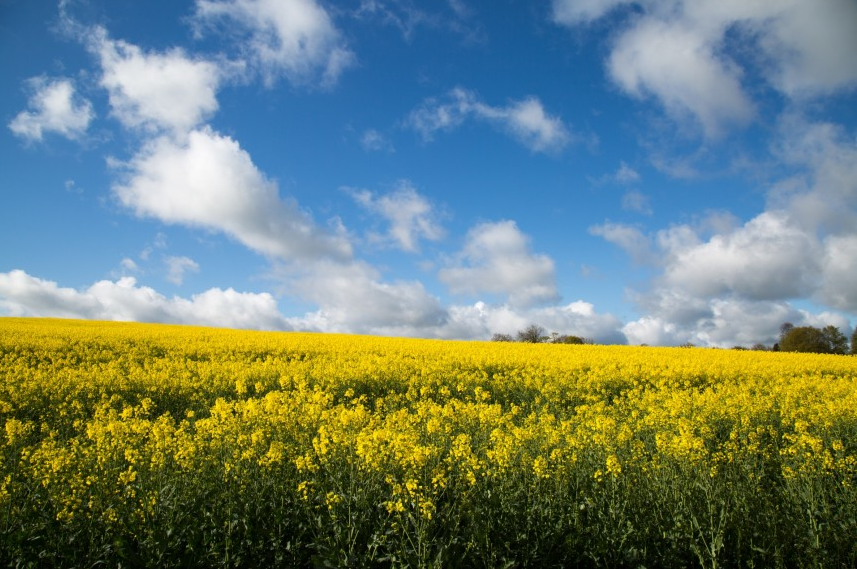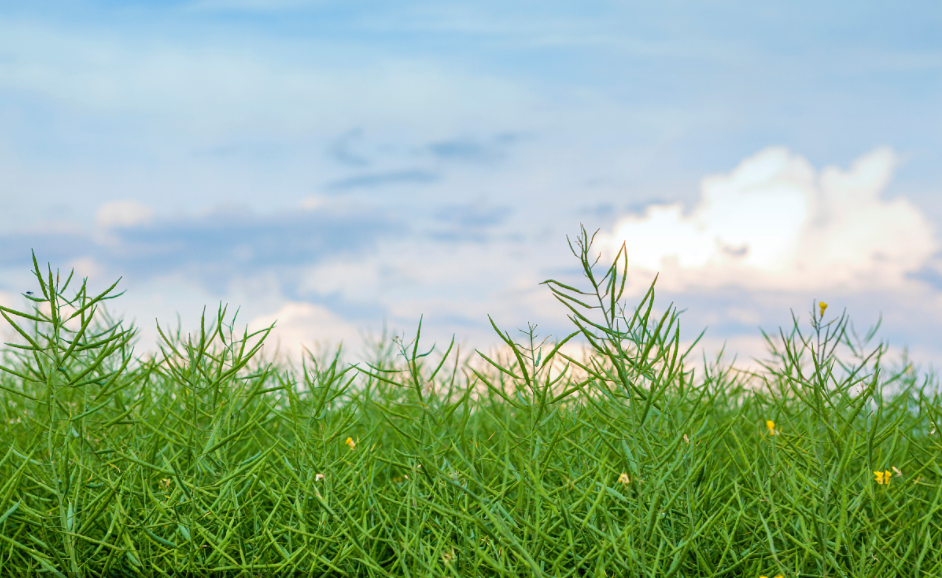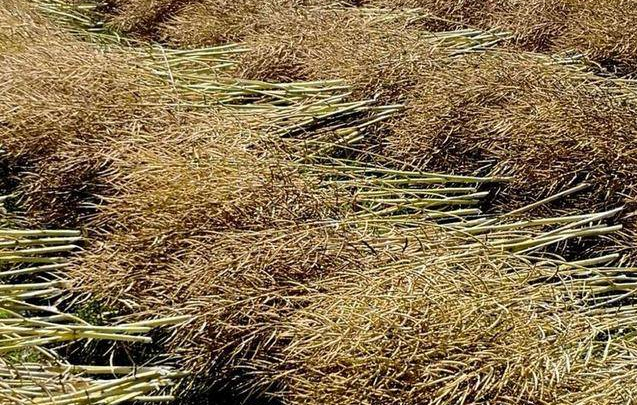1. Nutshells and stems can be used as feed
According to research, rape stalks contain 0.56% nitrogen, 0.75% phosphorus, 1.13% potassium, nutshells contain 1.66% nitrogen, phosphorus 0.39%, potassium 1.06%, and crude protein 3.14 %, 0.45% crude fat and a small amount of sugars, they are good feed after being crushed. However, it is worth noting that the glucosinolate content in the stalks and husks of high-glucosinolate rape varieties is also high, so it is not suitable to use too much.

2. Husks and stems can be used as fertilizer
Rapeseed stalks and husks are excellent organic fertilizers, which can be used as compost or directly applied to farmland as base fertilizer. Rape stalks and husks not only have complete nutrient elements, but also loosen the soil, which is very beneficial to the growth of crop roots. For example, in sweet potato production areas, the stalks and husks of rapeseed are directly buried in the soil as base fertilizer, and then combined with chemical fertilizers. The yield of sweet potato can be greatly increased.
3. The husk can be made into fiberboard
Studies have shown that rapeseed husks can be used to make fiberboards and agricultural products such as growing bowls, flower pots, spoons or buckets for watering.
4. The shell can extract cmcna and tannins

5. The stems can be cultivated for oyster mushrooms, purple fungus, etc.
Edible seedling rape stalk contains 48% carbon source, 0.63% nitrogen source, and 5.71% minerals. It is a good raw material for cultivating edible fungi. Using rape stalk to cultivate Pleurotus ostreatus and purple fungus, the biological efficiency can reach 60%. The cultivation material for mushroom-picking contains 17.75% crude protein, which is 12.77% higher than that of rape stalk. It contains 15.4% crude cellulose, which is more The rape stalk is 26.6% lower, which is an excellent feed for poultry and livestock. The technical measures are as follows:
(1) Strains.
Pleurotus ostreatus is No. p19, Pleurotus ostreatus, Florida Pleurotus ostreatus, Pleurotus ostreatus No. 2 and so on. Bulgarian Pleurotus ostreatus has the highest yield. Purple fungus is No. 1 and No. 2 can be used for Pleurotus ostreatus. Purple fungus No. 1 has the highest fresh ear yield.
(2) Medium.
Use conventional pda medium. The method is as follows: 100 ml of distilled water, 20% potato, 2% agar and 2% glucose, the bacteria can grow after one week of inoculation.
Cultivation adopts the method of wheat kernel medium: soak the wheat kernels, cook for 10 minutes, drain and add 2.5% gypsum powder. Inoculate with the above slant strains, the bacteria can grow after 3 to 4 weeks.
Rapeseed stalk cultivation material formula: Bulgarian Pleurotus ostreatus cultivation material, rape stalk fragments 72%, rape stalk powder 10%, bran 15%, sugar 1%, superphosphate 1%; purple fungus No. 2 cultivation material, rape stalk fragments 85% , Bran 10%, corn flour 3%, sugar 1%, superphosphate 1%. Rapeseed stalk processing method: cut the rape stalk into pieces about 4 cm long, soak in 0.5% lime water and 0.1% potassium manganate for about 10 hours, pick up and rinse with water to pH 2-8, wring dry until you hold it. Without dripping, after sprinkling loose, stir in oil stalk flour, wheat bran, corn flour, phosphate fertilizer and white sugar. The water content of the culture material is controlled at about 65% (hold the fingers tightly and wait for the water to overflow).
(3) Cultivation methods.
Pleurotus bulgaricus can be cultivated with compacted raw materials. The size of the bacteria is 25 cm × 20 cm × 10 cm. Each bacterial brick is folded about 1.5 kg of the material. After compaction, holes are made every 8 cm to the bottom (hole diameter 1.5 cm), fill the cave with wheat grains, the amount of seeds used is 8% of the amount of dry material, after inoculation, wrap the material block with a film, and manage it according to conventional cultivation methods. After harvesting a batch of mushrooms, arrange the material surface, remove the old hyphae, make holes every 10 cm with a glass rod, soak in 1% sugar and 0.2% urea solution for 1 minute, and then wrap the material in a film Block, let it fruit again. Purple fungus can be cultivated with plastic bags.

(4) Key technology.
Supplementary nitrogen source: Rape stalks contain a lot of carbon, and the nitrogen content is very low. The carbon to nitrogen ratio (c/n) is 70:1. Nitrogenous substances such as bran, rice sugar or corn flour must be added to supplement the nitrogen source and adjust Rapeseed stalk carbon to nitrogen ratio. In addition, most of the carbon in rape stalks exists in the form of macromolecular compounds such as cellulose, hemicellulose, and lignin, which can only be absorbed after the edible fungus hyphae produces extracellular enzymes. The utilization is slow and cannot meet the requirements of rapid hyphae growth. Require. Due to the batch, a small amount of sugar is added to the rape stalk culture material as a supplementary carbon source for the initial stage of edible fungi, which is beneficial to the propagation of mycelium and the utilization of other carbon sources.
The ratio of raw material thickness: the oil-seed stalk culture material is thick and hard, with large gaps and fast water loss, which is not conducive to the growth of mycelium. When preparing the culture material, add about 10% rape stalk powder as a filler, and compact the culture material to facilitate bacteria Silk food has fungus.
Raw material processing: The rape stalk is hard in texture and has a layer of wax on the epidermis, which is difficult for the mycelia to decompose and use. It should be chopped and hammered to form flakes, and then soaked in lime water to destroy the wax on the surface, soften and kill pests and bacteria. , And then cultivated, which is conducive to the activation of mycelial enzymes and promotes the decomposition of macromolecular carbon.
Culture medium water content: rape stalk has a rough and hard shell, but the internal tissue is loose, like a spongy, with strong water absorption. Therefore, after the rape stalks are soaked, the internal water should be wringed out slightly, otherwise the material will be too wet and the hypha growth will be stagnant after inoculation, "don't eat the material". Rape stalk culture material is loose and elastic, has poor water retention, fast water loss, and is easy to dry. Therefore, after each mushroom picking, use a glass rod to soak in water to replenish nutrients and increase moisture content, which is conducive to re-fruiting.
Strain selection: The rape stalk culture material has a loose structure and coarse raw materials. Therefore, the aerial hyphae and strains with strong wall climbing ability should be selected, which have strong cellulose decomposing ability, rapid growth, strong hyphae and high yield.
The above wonderful content is the sharing of Comprehensive Processing and Utilization of Rapeseed Husks and Stalks by Henan Zhongxing Grain and Oil Machinery Co., Ltd. If you want to know more rapeseed processing technology, you can contact us at any time.
Copyright © Henan Zhongxing Grain And Oil Machinery Co.,Ltd. All Rights Reserved. Powered by MetInfo